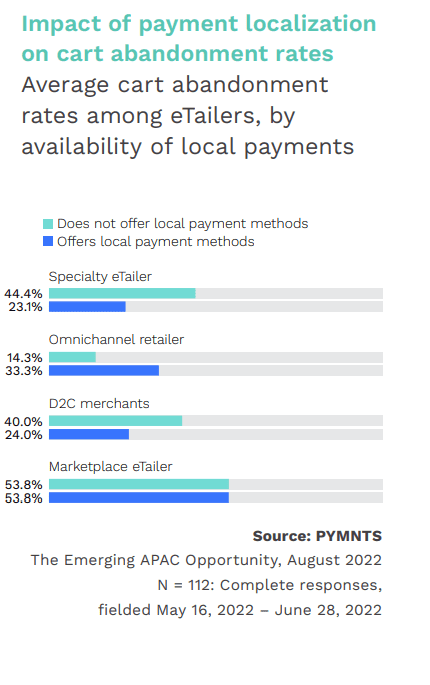The old adage, “When in Rome, do as the Romans do” is more relevant than ever when discussing retailer cross-border expansion.
As inflation still looms large in 2023, businesses’ near-term survival is doubly threatened by rising interest rates drying up consumer credit. These macro headaches — combined with daily issues merchants face such as cart abandonment and increased competition for customer loyalty — have some merchants considering cross-border expansion.
The potential benefits in successfully entering an emerging market to ease revenue constraints can be significant. A growing portion of consumers worldwide regularly shop online and eCommerce transactions are increasingly becoming a daily, or at least monthly, occurrence for connected consumers. The Asia-Pacific region is one example of a high-growth market with significant potential for eCommerce entrants, due to its high rate of digital payments acceptance.
However, each region has its own payment and associated regulation particulars. Brushing aside these subtleties could hobble even the most determined expansion strategies. This is especially true when it comes to localized payment options. Previous PYMNTS research notes that cross-border eCommerce retailers and merchants offering local payment choice produce 22% more in regional revenue than those lacking these options. However, more than 98% of merchants remain skeptical that customers seek localized methods.
This belief is to their detriment, as indicated by the latest “Global Commerce Tracker®,” a PYMNTS collaboration with Worldline.

Lack of local payment methods clearly has a large impact when it comes to specialty eTailers, as they suffer 92% higher abandonment rates than those that offer local methods. A similar gulf is measurable for D2C merchants. Recognizing and correcting such missteps while planning market entry is clearly key to success in high-growth and emerging markets.
One solution to these entry barriers is reaching out to locals for greater insights on expansion practicalities. In a PYMNTS interview, Andrew Monroe, global head of gaming and media at Worldline, explains the importance of reaching out for region-centric insights. “I wish individuals within these multinational corporations would ask more questions about the regulatory environment and the compliance environment beforehand,” he said. “It’s important to understand the different mechanisms of individual payment methods because otherwise, you’re putting your business at risk for fraud, or you’re putting your business at risk for losing goods and services if you give it too early without the payment being 100% confirmed, or you create an undesirable user experience.”
Fortunately for eTailers looking at global expansion, third-party partners may assist with easing this entry into foreign markets. PayU is one payments service provider that helps clients untangle local payment methods, as well as offering enhanced infrastructure, improved transaction monitoring and fraud detection. Another is Spreedly, an orchestration platform assisting retailers and merchants expand without technical heavy lifting by ensuring compliance with local data protection regulations and PCI compliance.
Online merchants and retailers looking to expand their reach may reap significant rewards. However, such growth should possibly be assisted with a third party or other knowledgeable partner to increase the likelihood of success.